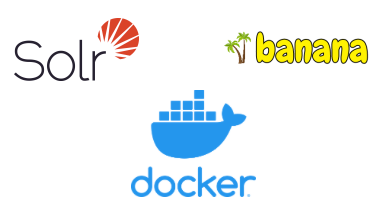Graph traversal features have been introduced in Solr 6 releases. These powerful features enables Solr users to run expressions that traverses graph structures in order to introduce or extract useful information. These graph traversal features are particularly useful when data is already indexed into Solr and light graph operations are required especially on top of text search. Before proceeding, a basic knowledge of Solr and graph structures is required.
Solr traversal implementation uses Breadth First Search (BFS) to perform graph traversal which is more suitable for solving search problems than its counterpart Depth First Search (DFS). It is also possible to combine graph traversal with other search or streaming operations.
In this post, we are going to explore basic graph visualization introduced in Banana v1.7. To visualize a graph in Banana, there must be at least a collection indexed into Solr with two fields: from and to that represent the adjacency matrix or, in other words, the edges of the graph. Alternatively, two collections can be used to visualize the graph: a main collection which is configured in the dashboard settings and an additional graph collection that stores the graph matrix. The main collection will be joined with the graph collection to retrieve node labels.
